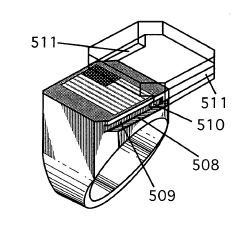
THE READING RING STORY
Does anyone not need glasses when they get older?
The eyes tend to be less flexible after the age of 50.
For someone who is born farsighted, this tends to not
be noticed in everyday life, or even while driving.
But when it comes to trying to read something,
a farsighted person has become in effect blind.
When most of the time eyesight is normal, it is
easy to forget to always carry glasses. Without
reading glasses, one cannot use a cell phone, or
buy products in a store, or read a menu. At least not
with out someone's help.

Ideally there should be a way to always be able to see,
even when in the shower. US patent number 7,339,755 was
and still is the result of an on-going development
of one solution to this problem. Because of the
fact that everyone has a dominant eye, a single lens
mounted on a ring appears to be able to serve as
backup reading glasses.
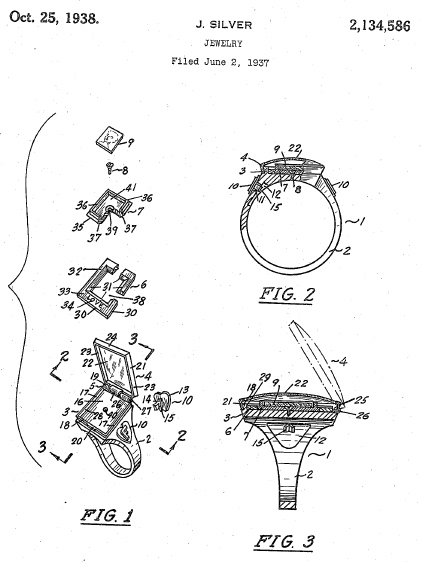
The patent application was filed before Google Patents
became available. The online patent search resources
up until then were not so powerful. So when US patent
2,134,586 was quickly discovered by the patent office,
the application was obvious in need of some major changes.
While the above patent is really not intended to provide
a reading glass function, it has not be easy to find
prior art up until Google Patents came online.
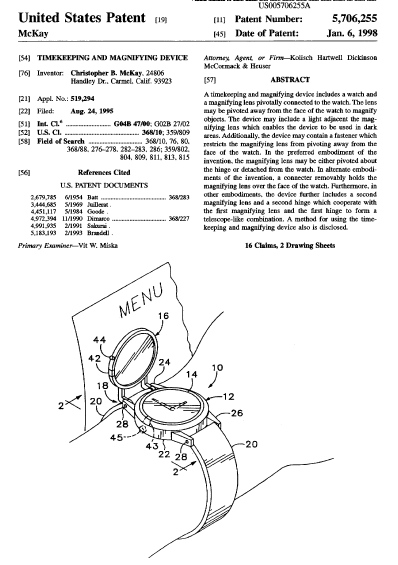
Nowadays there appears to be more attention directed to
the subject. But mounting a lens on a ring appears
to be rare, and it introduces some unexpected surprises.
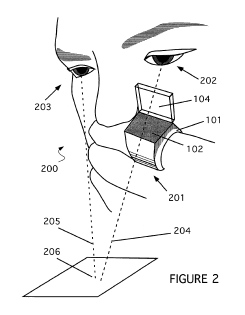
The first surprise is that only the dominant eye
needs a lens. The dominant eye is one everyone
uses to look into a telescope. This eye may be
different for everyone. But when this eye can focus
on something, ignoring the other eye appears to come
very natural.
The second surprise is that a ring with a lens
can be mounted on a hand such the hand can rest
naturally on the mouth. This means the lens does
not move, and is at about the spacing of glasses anyway.
And resting one's hand on one mouth comes so natural.
Could someone naturally read a whole book using such a ring?
The third surprise comes in if one happens to be right
handed and also happens to have a left dominant eye.
This encourages mounting the ring on the left hand.
Now a farsighted person can both read and write and see
all at the same time.
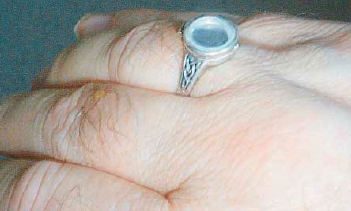
More surprises came out when it came to building and
testing a prototype. The first prototype shown above
was a modification of a "poison ring". This particular
ring was small enough such that it could be worn
and ignored until the need to read something
came up. And this particular ring had it's hinge
in the right direction.
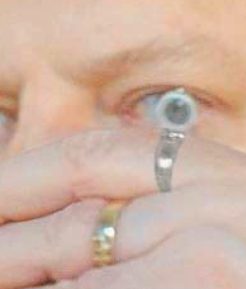
The fourth surprise is that a lens this small appears
to work well enough. This lens is large enough to read
the smallest print on a menu in a dark restaurant.
So the lens size can be pretty small.
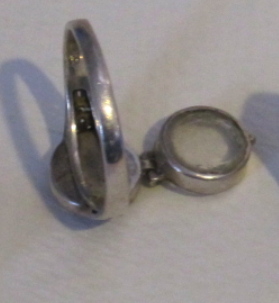
The fifth surprise comes after wearing the ring
for about a year. It may not be easy to see in the
photo above. But anything worn on a hand is
going to see a little wear. And this is going
to make it harder to view things. So the lens
element obviously needs to be protected from the
external world.
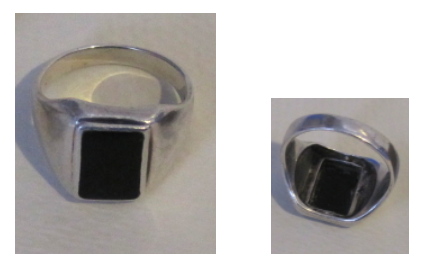
The second prototype mainly involved just finding
a ring which had a cavity under it's face plate.
The intention was to test the using of a lens which is
protected.
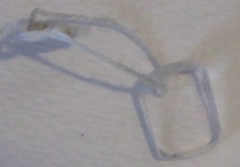
In this case a lens is shaped to fit inside the
cavity of the ring. A hole is drilled into one
corner of the lens. The knot in the cord that
goes through the hole was found to be convenient
if made a little bigger than expected.
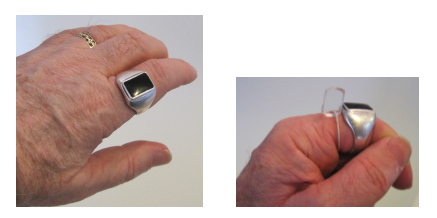
The cord is made to hold the lens on the finger.
Most of the time the lens neatly fits in the cavity
of the ring. This type of ring can be worn all the
time, and will be ignored until the need to read
something comes up. After years of use, this lens
seems to still be able to clearly read the finest print.
Now moving the lens in and out in this case definitely needs
improvement. This by the way is where having a larger
than average knot on the cord might come in handy. But
when one otherwise can't use a cell phone, the effort of
getting out the lens will be the least of problems. The
third prototype was intended to look for the best way to
provide access to the lens.
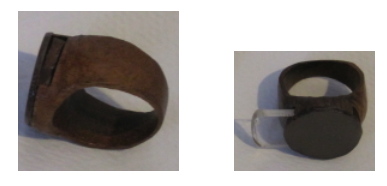
The lens definitely needs to be protected. So it
needs to be fully enclosed in the ring. The lens
needs to have two stable positions. When inside
the ring, it needs to be stable enough to not
move. But it always should be easy to move it out.
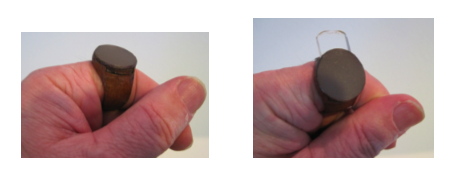
When outside the ring, the lens only needs to be
stable enough to stay in place. But where the lens
comes out should make it natural to read things
like newspapers. The third prototype shown above
is only intended to address the movement and placement
of the lens.
While the third prototype cannot be used for everyday
testing, it does appear to provide a natural
way to do things. For the fourth prototype, it
looks like there is a way to build the third prototype
using a solid piece of metal. And it should be possible to
shape the lens to snugly fit in both the in and
out positions. This fourth prototype (under construction),
may come close to something that the public could use.
Don Sauer
dsauersanjose@aol.com
Jan 2 2010